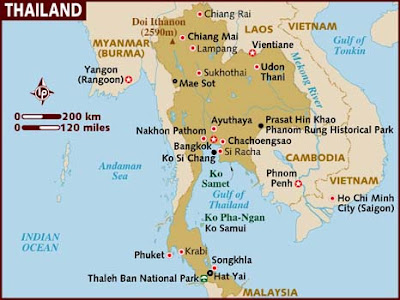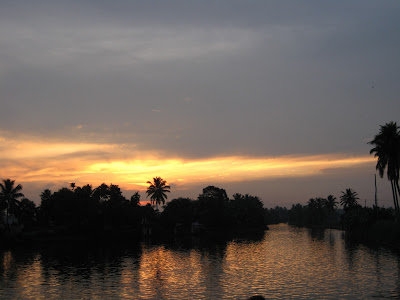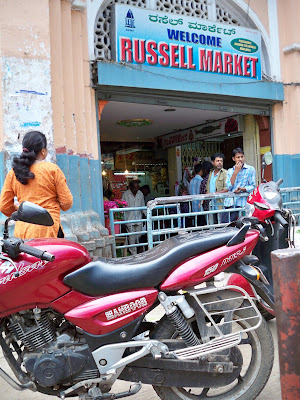I asked my brother Colin, a senior at Riverdale High School, to reflect on his experience in India, so here it is for you to read. Can you tell that we are similar? Enjoy, and thank you Colin for your reflections.
 |
| Bridges to India students 2011. Colin is second from left. |
From November 18th to December 10th I was on a trip to India with 12 other students, 1 parent, and 1 teacher from Riverdale High School. This trip, known as “Bridges to India”, has been occurring for the past 8 years. Before the trip we had spent over a year preparing and gathering donations in order to fulfill our goal of $40,000. The money all goes to the whole reason for the trip: supporting Hope Charities. Hope Charities is non-profit that gives aid to poor areas of people in Kerala, India. So far, Hope Charities has created a free clinic, tutoring school, women's sewing/empowerment center, a well for a impoverished community, a house for a poor family, and now, a new Pre-K school for local children. On our trip we visited major sites such as the Taj Mahal, we went to schools and talked with kids our age, and we also painted the new Pre-K school. Before we left on our trip, Daisy Kuchinad, the founder of Hope Charities, gave us one bit of advice: “Look to see”.
From when I landed to when I left, India never failed to be engrossing and surprising.
The traffic is insane, and when I say insane, I mean insane. Auto rickshaws drivers don't seem to understand the idea that the oncoming lane is for vehicles going the other way. Drivers swerve, drive perpendicular to traffic as traffic police who have given up trying to control the chaos stand by. People will cut off others and get into space that looked too small to fit their car (sometimes drivers do try to get into space which really is too small, the scuff marks on the sides of everyone's car is proof of that). Not only is the traffic hectic, but the horns are like an orchestra of the worst musicians ever. Honks surrounded me as soon as I stepped out of the airport in Delhi and they never ceased. Some horns are a standard beep, but in a place like India, being standard is way too boring. So, there are some horns that boom, some that squawk, some that scream, some that yodel, some that sound like “alalalalalalala,” you get the picture. Some cars even have multiple horns that drivers can switch between.
Indian people are by far the most hospitable, friendly, and open people I have ever met. In every school, the students would swarm us, asking for handshakes, our names, pictures, and even autographs. (Would students at a high school in the United States swarm some Indian students like this? Probably not.) The students' hospitality made our integration into their community so much easier. We didn't have to force ourselves in and hope for the best, the students wanted us to join them and they wanted to learn from us as much as they could. Just walking by on the street families will run out to their front porch and watch and wave. At first they may have a slight scowl as they try to figure out why 14 non-Indians are walking down their street, but as soon as they got a wave from us, we got one back and the scowl changed into a full face smile. As we visited houses in the poorer communities, people would sometimes give us gifts. Once the families saw us walking down to their house, they would run over to the nearest fruit tree and grab handfuls of some fruit that you've never seen nor heard of and then hand us every single one. All the while, they are smiling and laughing, clearly happy to give us the fruit.
When economists and politicians say that India will take over the world from the U.S., they mean it. India is constantly moving and evolving. Construction is never ending and people are always working. Neighborhoods and giant business buildings are shooting up everywhere. Outsiders always think of India as a place full of poverty, and while it is, India is also a place full of commerce. Without getting into the numbers, the Indian economy is booming. Now, I don't necessarily care what this means for GDP or how much I can gain from this, I care more about how this could change the way the world is run. The U.S. in terms of spirituality, poor population, population in general, and work ethic is dwarfed by India. Perhaps having India “take over the world” may prove to be a very positive thing. Just like with U.S. culture spreading across the globe, perhaps Indian culture will spread as well. Maybe one day, Americans will be living their lives with a little bit of an Indian attitude. Maybe they will think a little more about the problems that affect the poor, maybe they will be more in touch with their spiritual side, maybe they will think about how the world is not all about them and that there are 7 billion other humans sharing the world with them, and maybe Americans will have to work as hard (not necessarily at their profession) as many other people do across the globe right now.
Living in the U.S., even the most well-educated and globally aware people are still sheltered by the luxuries of American society. Moving out and exploring other countries is completely necessary in order to see how the majority of people actually live their lives. If every American traveled to another country and “looked to see” (and not to a resort town full of people exactly like us), they would begin to understand that the U.S. is not normal at all, but the exception. They might feel grateful to live in the U.S. and they might lose the complacency that all Americans have towards the problems of our world. They might see that American society is in some ways great, but in other ways completely unrealistic and wrong. I know that India did that to me.
P.S. Be on the lookout in the next few days as my Asian and Asian American Feminist Theology class begins posting about our Thailand trip at http://woointhailand.blogspot.com/.
If I have computer access you'll also find some posts or photos on my own blog. Thanks for reading.



















































